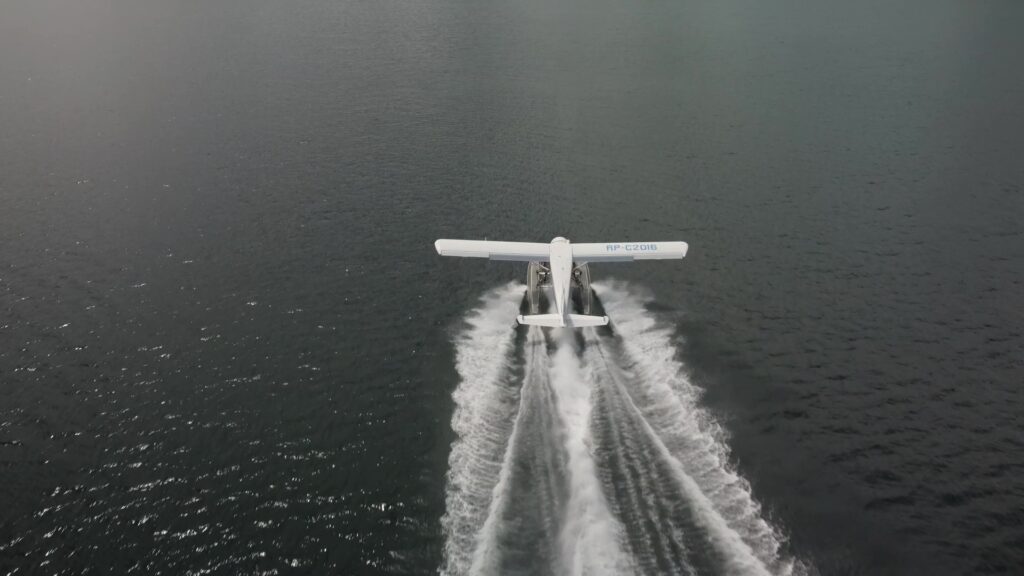

In some parts of the world, the words float plane and seaplane are interchangeable. However, the two have different meanings in technical terminology. A float plane and a seaplane can both take off and land on almost any body of water (oceans, lakes, rivers, etc.). However, a float plane has greater capabilities. Let’s look at the distinctions between the two.
Float plane vs. seaplane: What’s the difference?
Seaplane Characteristics
Any aircraft that can land, float, and take off on water with it’s fuselage is referred to as a seaplane. Flying boats are seaplanes with hulls that resemble those of a boat.
The majority of float-planes are modified land-planes. Two pontoons, or floats, usually support float planes on the water. Land plane wheels are frequently replaced by floats. Straight or amphibious floats are used on float planes. Straight float aircraft have no wheels and are unable to land. Amphibious aircrafts feature retractable wheels and can operate on both land and water.
The floats are what makes a plane a float plane Certain traits are shared by all seaplane. To aid takeoff, they are designed with a step—a break in the hull’s profile. The step aids takeoff by decreasing the amount of float in the water, lowering overall drag, and allowing the pilot to alter pitch attitude during the takeoff run. The deck refers to the top of the float. Behind the float are retractable water rudders that aid in steering in the water.
The design of the float bottom can have a considerable impact on the seaplane’s handling qualities. A shallow V bottom float, for example, would take off easily in calmer water but would be highly rough in other situations. While a deep V bottom float might be helpful in rough water, it would be difficult to get out of the water quickly in calm conditions.
Pros and Cons of a Seaplane
The fuselage, which works like a ship’s hull in the water because the fuselage’s underside has been hydrodynamically designed to allow water to flow around it, is the principal source of buoyancy in a flying boat. Small floats are put on the wings of most flying boats to keep them steady. Although not all small land plane were float planes, the majority of large seaplanes were flying boats with their hulls supporting their massive weight.
Some seaplanes can withstand rougher conditions than float planes. In waves or with a slight tailwind, a hull plane’s lower center of gravity makes it less prone to flip. Float planes, on the other hand, can take off faster from smooth water because the pilot can bank onto one pontoon and eliminate half of the water drag while gaining enough speed to fly.
You must depart from the entire hull’s large surface area when flying a seaplane, sometimes purposely pitching up and down to break free. If not done correctly, the plane can dangerously porpoise and crash.
Float plane Characteristics
A pontoon plane is another name for a float plane. A float plane has separate floats or pontoons that serve as a landing and takeoff surface instead of a fuselage/belly that can land directly on water. A float plane’s fuselage/belly is not supposed to touch the water. A float plane is a subcategory of seaplane which is why the two are interchangeable.
In contrast to a seaplane, where the hull serves the dual purpose of providing buoyancy in the water and space for the pilot, crew, and passengers, a float plane is a normal land plane with independent floats instead of wheels. The float kind of seaplane is the most prevalent, especially for those with low horsepower. It can have either single or twin floats However, most float planes have twin floats.
Pros and Cons of a Float plane
Because the fuselage is not in contact with water, float planes have a number of advantages, including the elimination of compromises for water tightness, general impact strength, and the hydroplaning characteristics required for the aircraft to leave the water. Attaching floats to a land plane also enables for significantly higher production numbers to cover the costs of developing and producing the tiny number of water-based aircraft.
Furthermore, with the exception of the largest seaplanes, float plane wings usually provide better clearance over obstructions such as docks, making loading easier while on the water. In comparison to aircraft fitted with wheeled landing gear, float planes have more drag and weight, making them slower and less maneuverable in flight, with a slower rate of ascent.
Which is better, a float plane or a seaplane?
The answer is contingent on the operator’s intention or intended usage for the aircraft. Many float planes are versatile and amphibious which can give them an edge over other seaplanes. These planes can take off and land on a runway as well as in the water.
There are many types of flat planes, and even more types of seaplanes, but talk about one formidable examples: The De Havilland Canada DHC-2 Beaver float plane, which is part of Horizon Sun Charters fleet. Our seaplanes is based in Puerto Princesa, Palawan.
The de Havilland Canada DHC-2 Beaver floatplane
Our DHC-2 Beavers can operate from water surfaces like oceans, lakes and rivers, with a minimum surface run of 300 meters (1,000 feet) in length. When flying under Visual Flight Rules (VFR), it can carry a weight of around half a tonne (1,000 lbs) across various islands in Palawan. This is why it is an ideal aircraft for an island nation like the Philippines, where land and sea transport can be a challenge.
- Capacity: 6 passengers + 1 pilot
- Wingspan: 48 feet
- Height: 10.4 feet
- Length: 32.9 feet
- Cruising speed: 180 km/h


Pingback: A Journey of a Lifetime: Creating Palawan's First Seaplane Airline